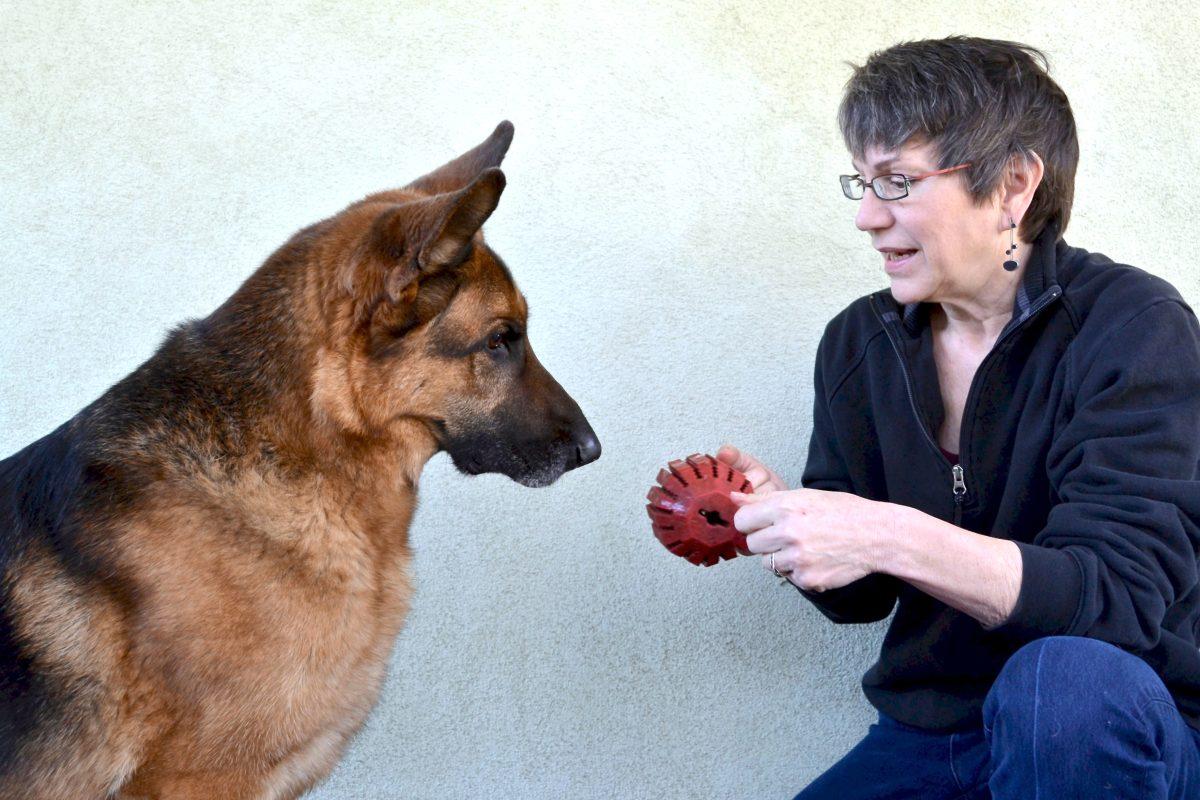One N.C. State professor of science journalism, a disagreeable German shepherd and a few corpses is the recipe for a new book about the science of work dogs.
Cat Warren, associate professor of English at NCSU, recently published What the Dog Knows: The Science and Wonder of Working Dogs, which went on sale Oct. 1.
According to Warren, about 20 percent of the book is a memoir, following her journey training her third German shepherd, Solo, to be a cadaver dog.
“I was inspired, I think, when he turned about six years old,” Warren said. “I realized I wanted to write about the world he’d ex posed me to, which was not only the work I did with him—that’s one part of it, but it was also the world I got to witness working with canine units.”
Cadaver dogs are those who, with a trainer, look for people who are missing or presumed dead.
Warren said she got the idea to train Solo when he was a puppy. Annoyed with his be havior, Warren took Solo to a trainer when he was about four months old.
“He was a pretty impossible puppy,” War ren said. “I didn’t know what to do with him. He was dog aggressive — he didn’t get along with other dogs. He was just a little hellion.”
The trainer, who had worked with anoth er of Warren’s German shepherds, said that Solo displayed traits compatible with cadaver dogs—he was energetic, tough, intelligent and he had a good nose.
The trainer suggested training Solo as a cadaver dog and well-known trainers such as Andy Rebmann. Warren also shadowed Steve Sprouse, a K-9 officer in Florida for a few days.
Nowadays, Warren said she and Solo go out several times a year, at the request of law enforcement officials, to look for bodies.
“Solo and I go out occasionally — people don’t go missing all that often,” Warren said. “Nine times out of 10, when you go searching, you’re actually clearing areas. Nine times out of 10 you don’t find somebody.”
Warren and Solo serve as volunteers, which, Warren said, explains why she doesn’t go out searching exceptionally often.
“Between the training and the searching, it’s a very serious hobby,” Warren said. “If I were somebody in law enforcement, I might end up doing it more but these days there aren’t actually a ton of dogs doing cadaver work in law enforcement, the majority of dogs are volunteers.”
Warren interviewed animal psychologists, trainers, forensic anthropologists and scent experts for the book.
Warren said there are chapters about all sorts of subjects, ranging from how a dog’s nose works to how a dog’s testimony might hold up in court.
“You have a whole arena of what constitutes probable cause,” Warren said. “You even have the arena of what happens in court when you’re depending on a dog for your testimony about something.”
Warren said that even after eight and a half years, she considers herself a beginner when compared to other handlers and trainers.
“We’re talking about people who have been doing this for decades,” Warren said.
Warren used to be a reporter, and now she teaches science journalism. Her journalistic experience combined with her “world of ac cess with Solo,” allowed her to write the book, which she said she views as a huge reporting project.
According to Warren, it’s a challenge to be a part of a team with your dog. Warren said that while training a dog, the dog also trains you.
“I think I’ve grown enormously, partly just by being in this very different world,” War ren said. “It’s that notion—as with any new discipline—when you fall in love with it and decide you want to study it … and get to work with people who are better than you are.”
Solo is no longer alone, because Warren now has a new German shepherd pup, which she is also training to become a cadaver dog.
Those who are interested can view videos of Warren with Solo on her website, www. catwarren.com, and can buy the hardcover copy of her book.
“It’s not always perfect,” Warren said. “But I do think it’s one of the most compelling things I do these days.”








